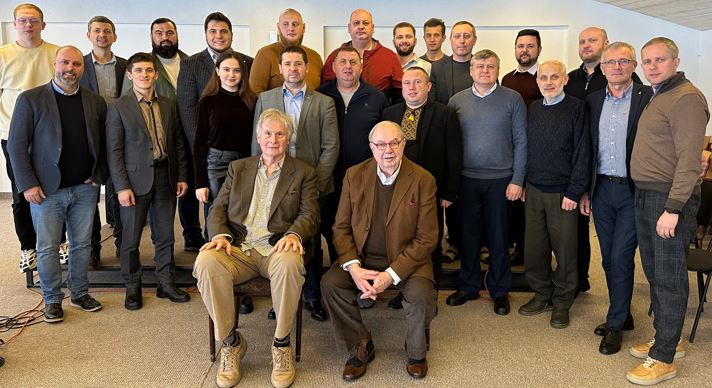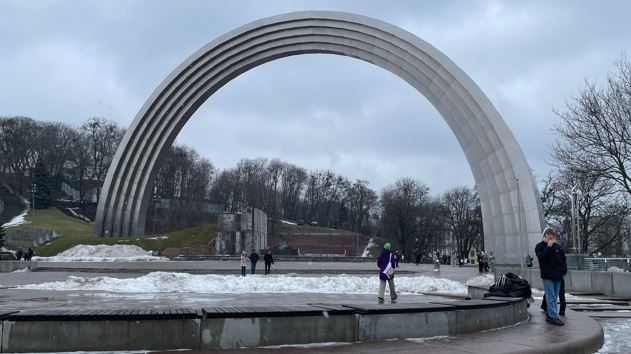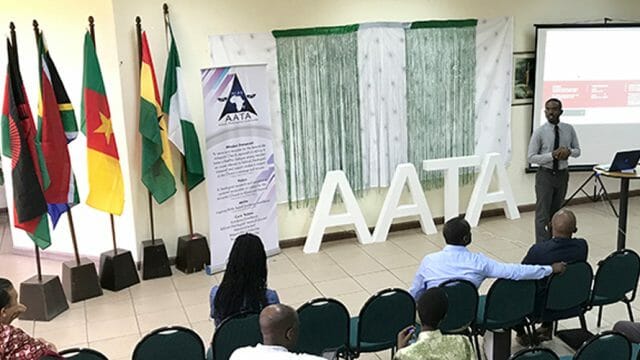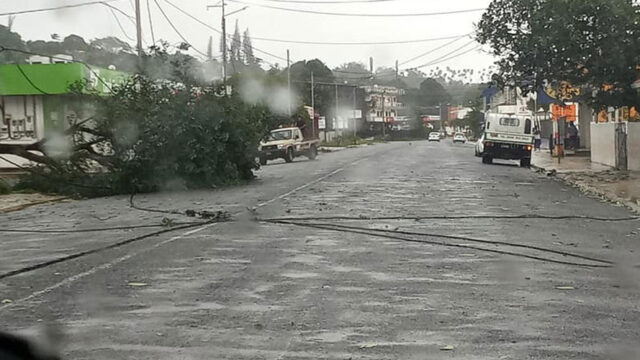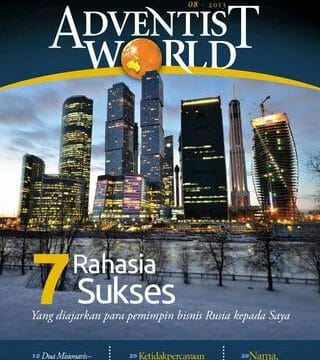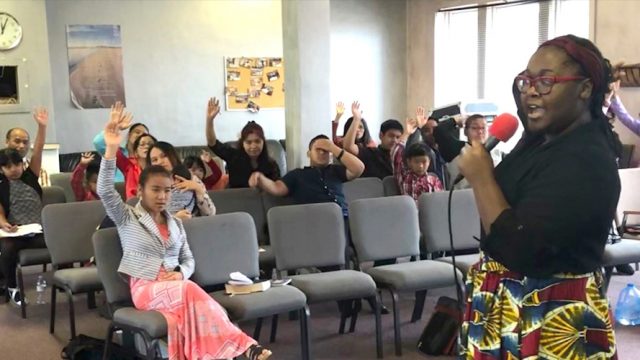Facilitator reflects on his visit and his exchanges with Ukrainian Adventist church members.
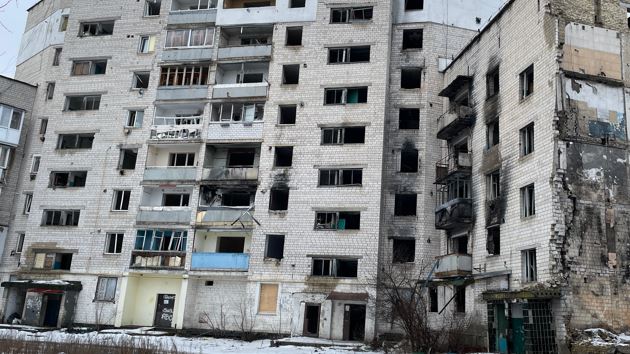
My trip to Ukraine began with a false start. Storm Isha reached Ireland and was wreaking havoc in Dublin, thus grounding most planes at Dublin airport. After sitting for twelve hours at the gate, we were told that the flight to Budapest had been postponed until the next day at noon.
On Monday, 22 January, I finally began my journey and, after an overnight car ride from Budapest, I reached Polyana in the west of Ukraine in the early hours of Tuesday morning. There I met up with John-Robert Curtin and Tony Belak, two American mediation professors who had already begun teaching a practical module in mediation.
This training had commenced two months earlier with online modules and was facilitated by the Center for Conflict Resolution at La Sierra University in the United States and the Centre for Conflict Resolution Europe based at the Adventist Church’s British Union Conference. The program was offered free of charge to Ukrainian pastors in support of their ministry within the difficult context of war.
Maksym Krupskyi, Public Affairs and Religious Liberty director for the church’s Ukrainian Union Conference and director of the Ukraine Hope Media Group, was superbly efficient in handling all logistical matters regarding the training, which ended up being a most enriching event for all participants.
Three Days of Training
Twenty-one pastors and administrators took part in the three days of training. Curtin and Belak said they were impressed by the level of class participation and the jovial atmosphere during the classes. The students were immersed in the case studies and mediation roleplaying they were required to undertake and, and at the end of the training, expressed appreciation for the useful skills acquired during the course. The trainers also found the experience rewarding and appreciated the openness and candid manner in which the participants engaged with the material presented. They also expressed hope that the knowledge imparted would be put to good use in bringing healing to a church community and society drastically affected by tragedy.
From time to time, a pastor would leave the room with a look of anxiety on their face and, upon their return, I would see them sit, wavering in their resolve to see the class through. “They got news from home,” I would be told. Thankfully, during the training there was no bad news, just the day-to-day worry of an attack that could happen at any time while they were away. We were relatively safe in Polyana, but this did not take away the uneasiness some of us felt. When speaking to the pastors, I saw some of them check their phones while waiting for translation. Again, they were not scrolling on Facebook or Instagram but simply checking their messages or airstrike warning apps.
Mines among the Berries
After the training on Wednesday, I took the overnight train to Kyiv, where I was welcomed by Oleksandr (known as Sasha) and Volodymyr, an English professor and my translator for the weekend. From the train station we went to the Adventist Institute in Bucha and, after freshening up and enjoying a traditional Ukrainian breakfast, we began our journey to Borodianka.
While driving through Bucha I was impressed to see that the city had been rebuilt almost in its entirety. When I asked how that was possible, Sasha, a pastor and Hope Channel Ukraine employee, began to share how the people of Bucha had decided to move on from the tragic destruction they had suffered. He told me that the resolve and resiliency of the people were derived from a deep sense of historical necessity and faith.
“Look!” he said. “Do you see that forest? It’s full of dangerous mines. But it was also full of berries. When the berries were ripened, the people went into the forest and harvested them. ‘These are our berries,’ they said, ‘and we’re going to get our berries as we’ve always done. We won’t let their mines stop us from getting our berries.’ ” Sasha laughed with pride, almost revering the stubborn resolve of people to put berries before life, an example, perhaps, of how far they will go and how much they are willing to sacrifice to honor the land they call home.
Borodianka
Borodianka still carries the ugly consequences of war: bombarded homes, monuments shredded by bullets, and deep craters left behind by rockets. It is being rebuilt, and people are everywhere, working tirelessly to remove rubble, install sewage and water pipes, and rebuild dwellings.
The city is also a clear example of how important symbols are in spurring on a nation to rebuild itself. Sasha and Volodymyr kept reminding me how important these symbols are. For example, the red and black flag flying high next to the yellow and blue, Sasha explained, “symbolizes and is a reminder of the shed blood of victims and soldiers; the blood changed the colours of our flag.” There’s also the mural of the “Smiling Servicewoman” whose smile stares danger in the face, unafraid, almost welcoming death in exchange for peace. This mural also signifies that women are as much a part of both the battle for liberation and the rebuilding of the country.
For me, the statue of national poet Taras Shevchenko in the center of the town was most poignant; the poet’s bust was damaged by missile shrapnel, and it displayed bullet holes, but it stood erect still, defiant and majestic.
Behind it, the mural of Lesya Ukrainka, another icon of Ukrainian literature, was rescued from the ruins of a fallen building. While standing in front of Shevchenko’s statue, almost with reverence, I thought of the immeasurable power of the word which, in times of crisis, through verse and song, reaffirms identity and stirs a people’s resolve to survive.
Bucha
While walking back to the car, my companions suggested we go back to the city of Bucha. We passed a few military checkpoints and came to Vokzalna Street. This street had become another symbol of resistance and resiliency. While this was the scene of some of the most horrid crimes of war ever committed, it is now entirely rebuilt. New beautiful houses stand tall on both sides of the road. I remember one of the pastors sharing, during the mediation training, how his house was destroyed twice, and he rebuilt it twice — in another part of Ukraine. Such is the spirit of unwavering fortitude.
Sasha stopped the car and began telling me how he escaped the siege of the city together with his family. He said, “On the third day of the siege, people were telling me that I had better leave Bucha. I wanted my family to be safe, but I hesitated. Why? Because I remembered the verse where it says that we should pray that our flight may not be in winter nor on the Sabbath. As it was the end of winter and the next day would have been Sabbath, I decided to be faithful to God and wait two more days. The siege had tightened, and Russian soldiers were now walking our streets. However, five days after the invasion, God provided a safe passage for me and my family to leave Bucha.” He had used the same road we were on.
As I retired to my room on the Adventist campus, I was overwhelmed by a sense of deep appreciation and solidarity. We take so much for granted, but when tragedy strikes, humanity finds a way to endure. This capacity to adapt is innate to us all. Faith enhances it; it gives it intransient meaning. Tragedy shakes us and it can break us, but it can also reveal our God-given ability to face and survive the unimaginable. It further rearranges our priorities, as one of the Institute’s staff recognized: “When I lost my home, I thought that was the worst thing that could happen to me. Then my son was killed, and the loss of my home meant nothing compared to losing him.”
A New Normal?
On Friday night I was privileged to speak to the students and encourage them to persevere in the belief that “God is (still) for us.” On Sabbath I preached in Podil church in Kyiv and then had a leisurely walk around the city: St Andrew’s church, the wall of remembrance of national heroes, the arch of brotherhood, which now has a painted “crack” in it, and the statue of the two brothers is demolished — symbol of a broken relationship between two nations.
As we drove and walked around Kyiv, I almost forgot that we were in a country at war, except for the military checkpoints and reinforced official buildings. The people of the city were going about their business, refusing to be held hostages in their own homes. There have been airstrikes for the past two weeks, but most people don’t even seek shelter any longer. This has become their new normal.
Courage, Resilience, Kindness, Quiet Faith
As I was saying goodbye in front of the central train station, Volodomyr said, “I feel as if I’ve known you for twenty years. I will miss you!” The feeling was mutual. In a short time, I had grown fond of people I learned to respect and admire. Their courage, resiliency, kind demeanor, and quiet faith touched me deeply, and it has awakened in me a sense of togetherness and brotherhood rarely experienced. I heard no one complain or display a victim’s attitude during my stay. Even though I had gone there to support and encourage, I was the one leaving encouraged and affirmed in my trust in God and faith in humanity.
The original version of this story was posted on the Trans-European Division news site. Centre for Conflict Resolution Europe projects are sponsored by the Trans-European Division, the British Union Conference, and the Versacare Foundation in the United States. The European center is a partner of the Center for Conflict Resolution at La Sierra University, Riverside, California, United States. Dan Serb is president of the Irish Mission of the Seventh-day Adventist Church.


